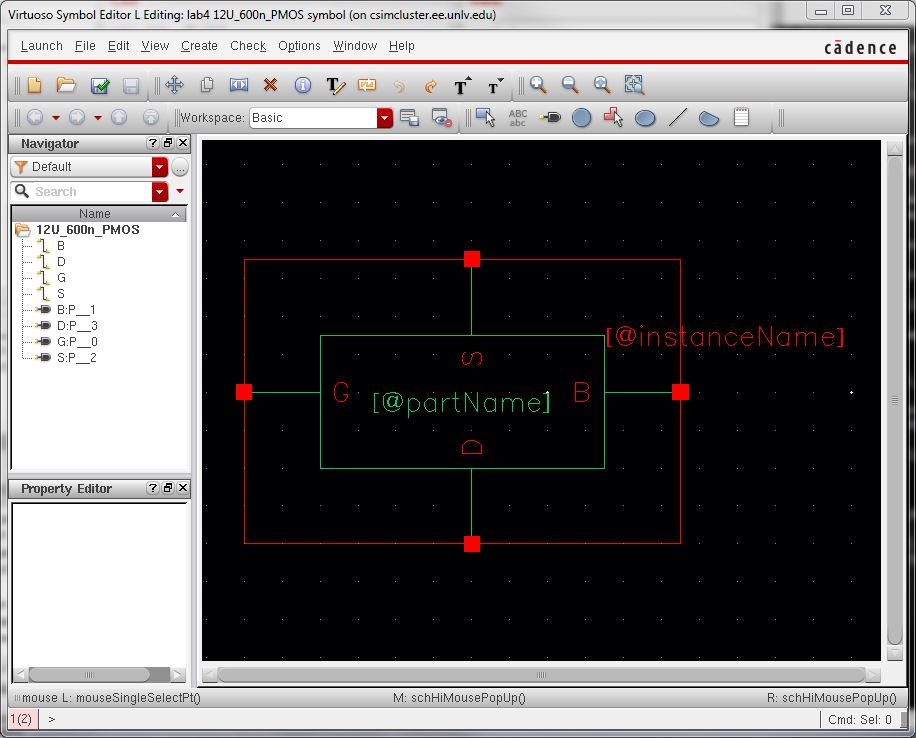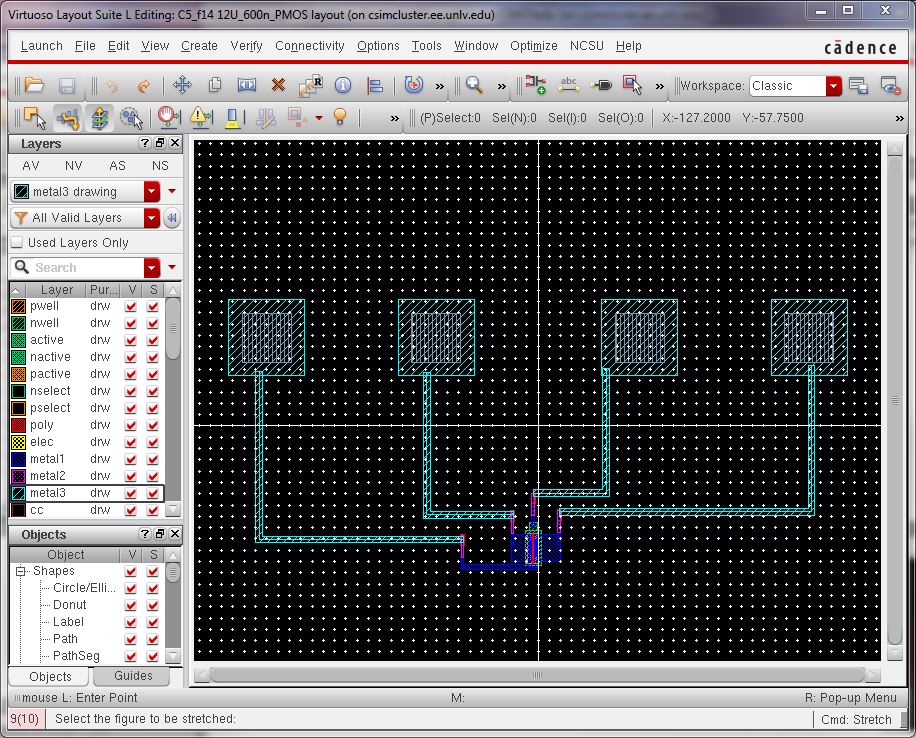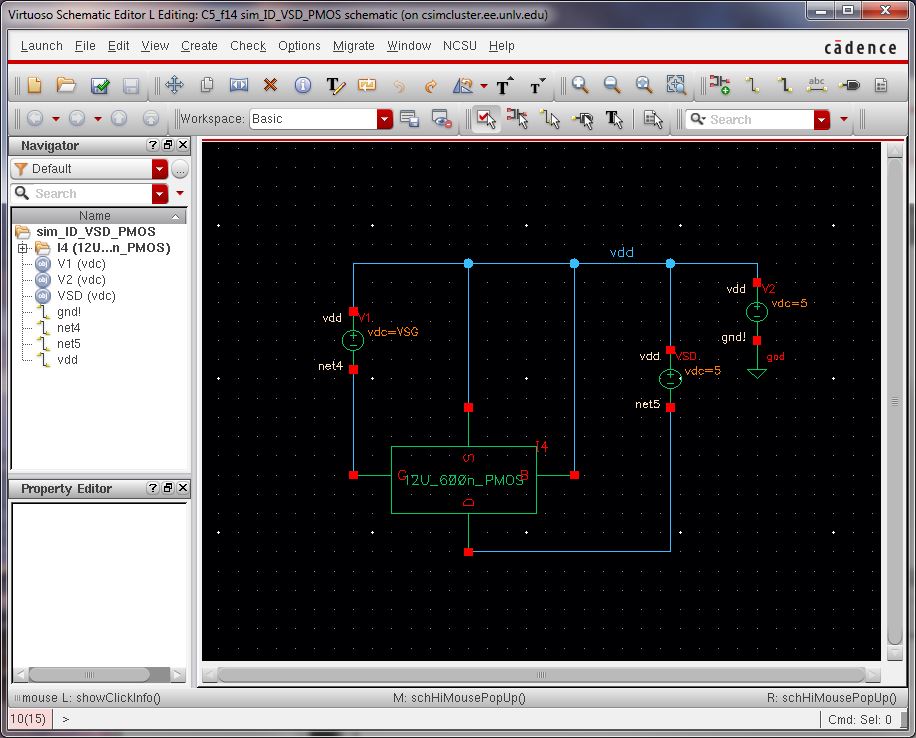EE 421L Digital Integrated Circuit Design -
Lab 4
IV characteristics and layout of NMOS and PMOS
devices in ON's C5 process
Pre-lab work
- Back-up all of your work from the lab and the course.
- Read through this lab before starting it.
- Go through Tutorial 2 seen here.
- In the simulations in this lab the body of all NMOS devices (the substrate) should be at ground (gnd!) and the body of all PMOS devices (the n-well) should be at a vdd! of 5V.
- Generate 4
schematics and simulations (see the examples in the Ch6_IC61 library, but note that for the PMOS body should be at vdd! instead of gnd!):
- A
schematic for simulating ID v. VDS of an NMOS device for VGS varying from
0 to 5 V in 1 V steps while VDS varies from 0 to 5 V in 1 mV steps. Use a 6u/600n width-to-length ratio.
- A
schematic for simulating ID v. VGS of an NMOS device for VDS = 100 mV
where VGS varies from 0 to 2 V in 1 mV steps. Again use a 6u/600n width-to-length ratio.
- A
schematic for simulating ID v. VSD (note VSD not VDS) of a PMOS device
for VSG (not VGS) varying from 0 to 5 V in 1 V steps while VSD varies
from 0 to 5 V in 1 mV steps. Use a
12u/600n width-to-length ratio.
- A schematic for simulating ID v. VSG of a PMOS device for VSD = 100 mV where VSG varies from 0 to 2 V in 1 mV steps. Again, use a 12u/600n width-to-length ratio.
- Lay out a 6u/0.6u NMOS device and connect all 4 MOSFET terminals to probe pads (which can be considerably smaller than bond pads [see MOSIS design rules] and directly adjacent to the MOSFET (so the layout is relative small).
- Show your layout passes DRCs.
- Make a corresponding schematic so you can LVS your layout.
- Lay out a 12u/0.6u PMOS device and connect all 4 MOSFET terminals to probe pads.
- Show your layout passes DRCs.
- Make a corresponding schematic so you can LVS your layout.
- Some examples are seen below (click for a larger view).
- They are, in order: 1) probe pad layout, 2) probe pad schematic, 3) probe pad symbol, 4) schematic of the MOSFET with probe pads, 5) corresponding symbol view, 6) corresponding layout (which is DRCed and LVSed), 6) zoomed in view of the layout, and finally 7) simulation schematic for ID v VSD for varying VSG (which is not used for an LVS since there is no way to lay out a battery).
- These cells are found in lab4.zip
Ensure that your html lab report includes your name and email address at the
beginning of the report (the top of the webpage).
When finished backup your work (webpages and design
directory).







